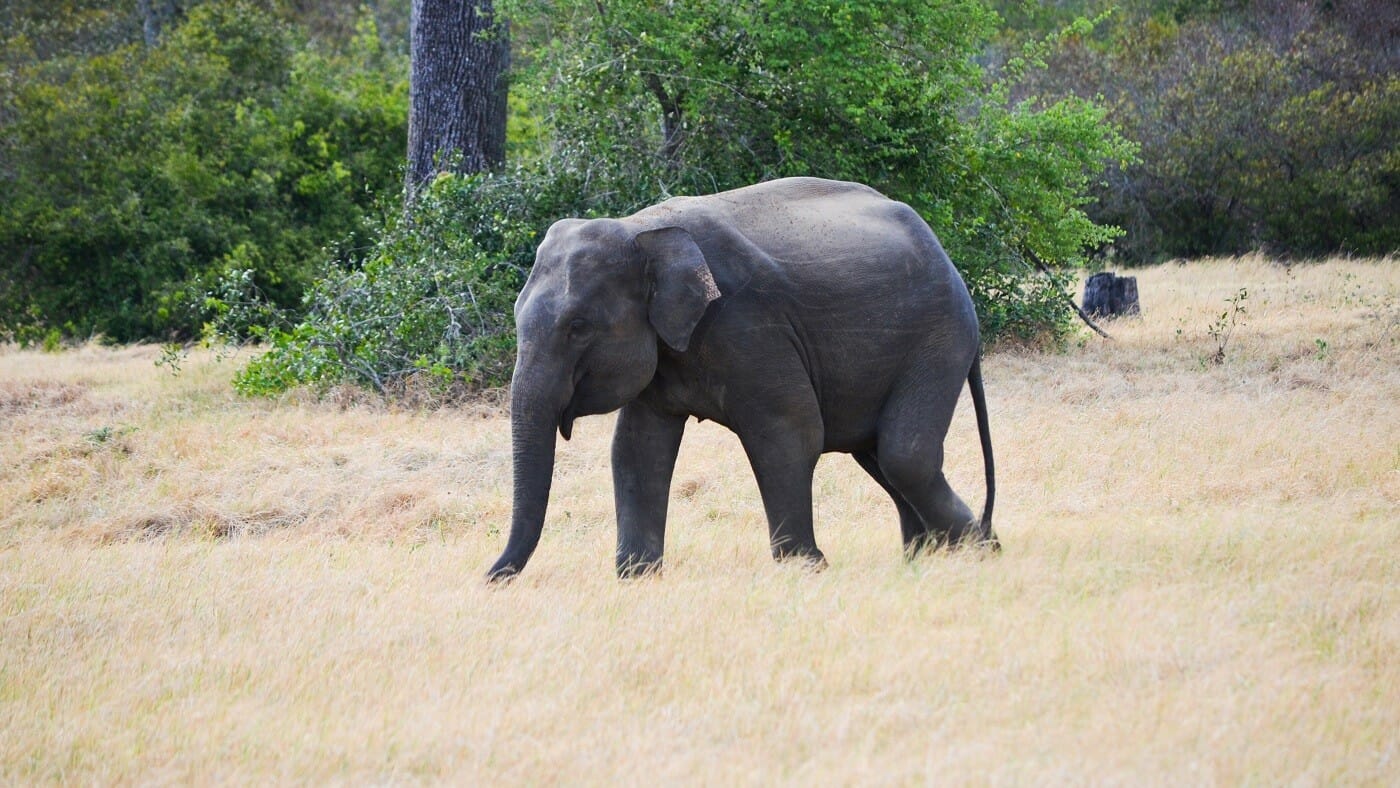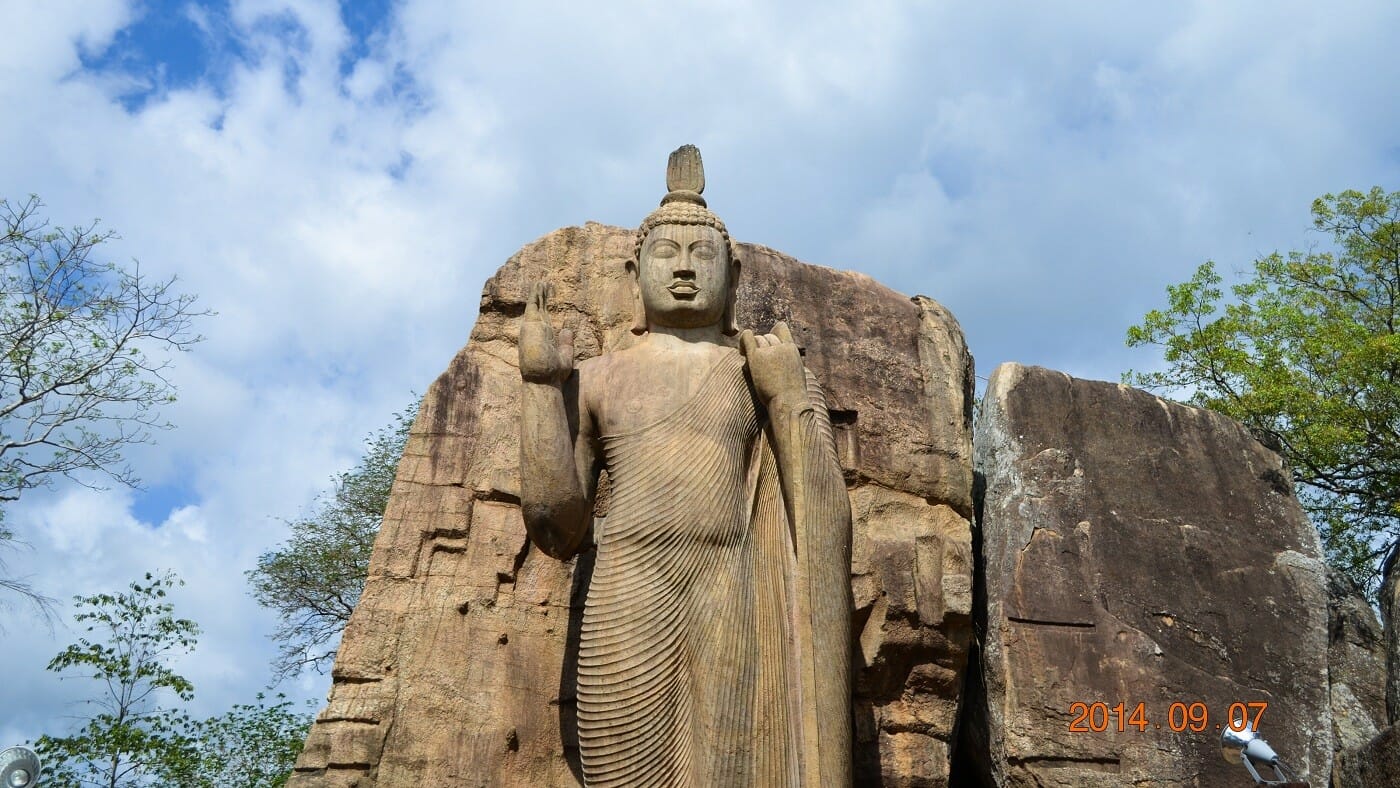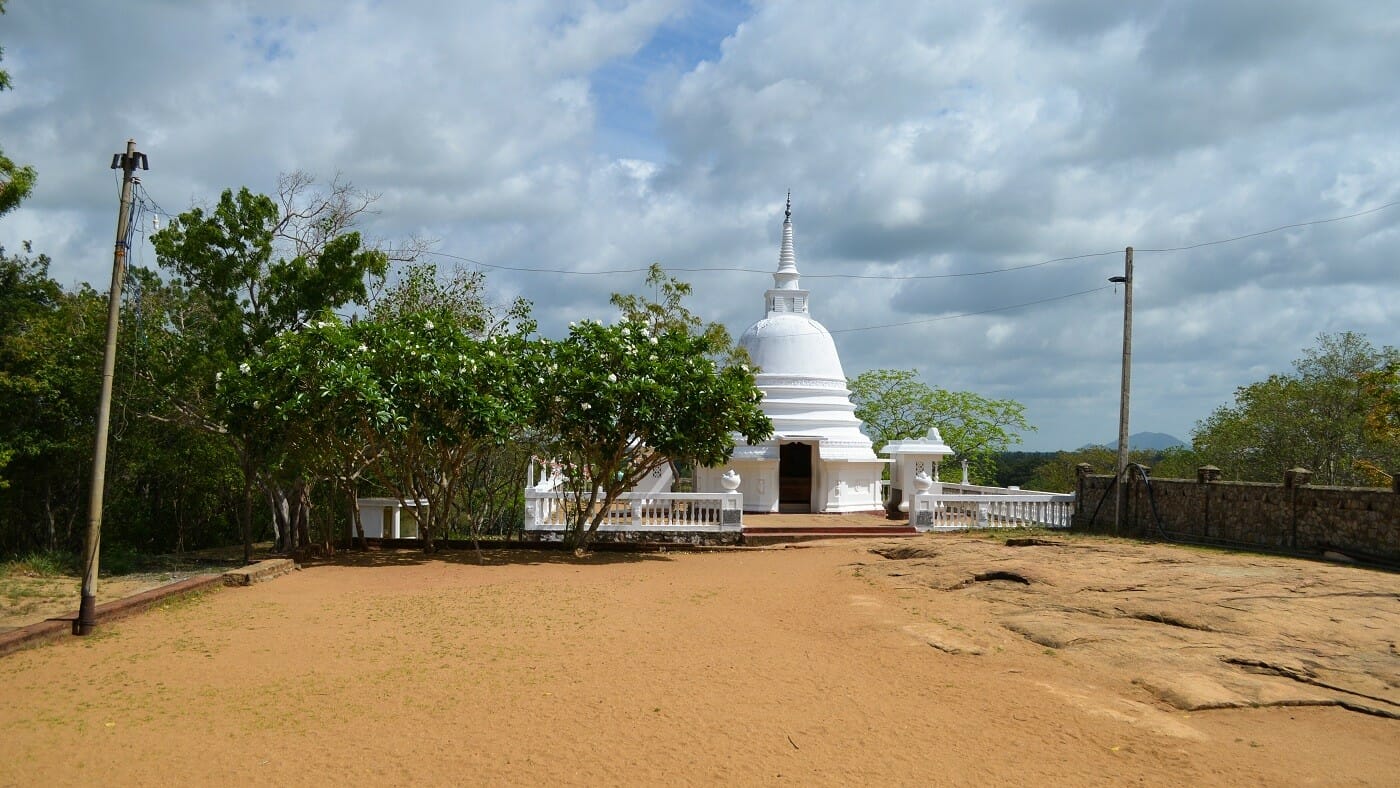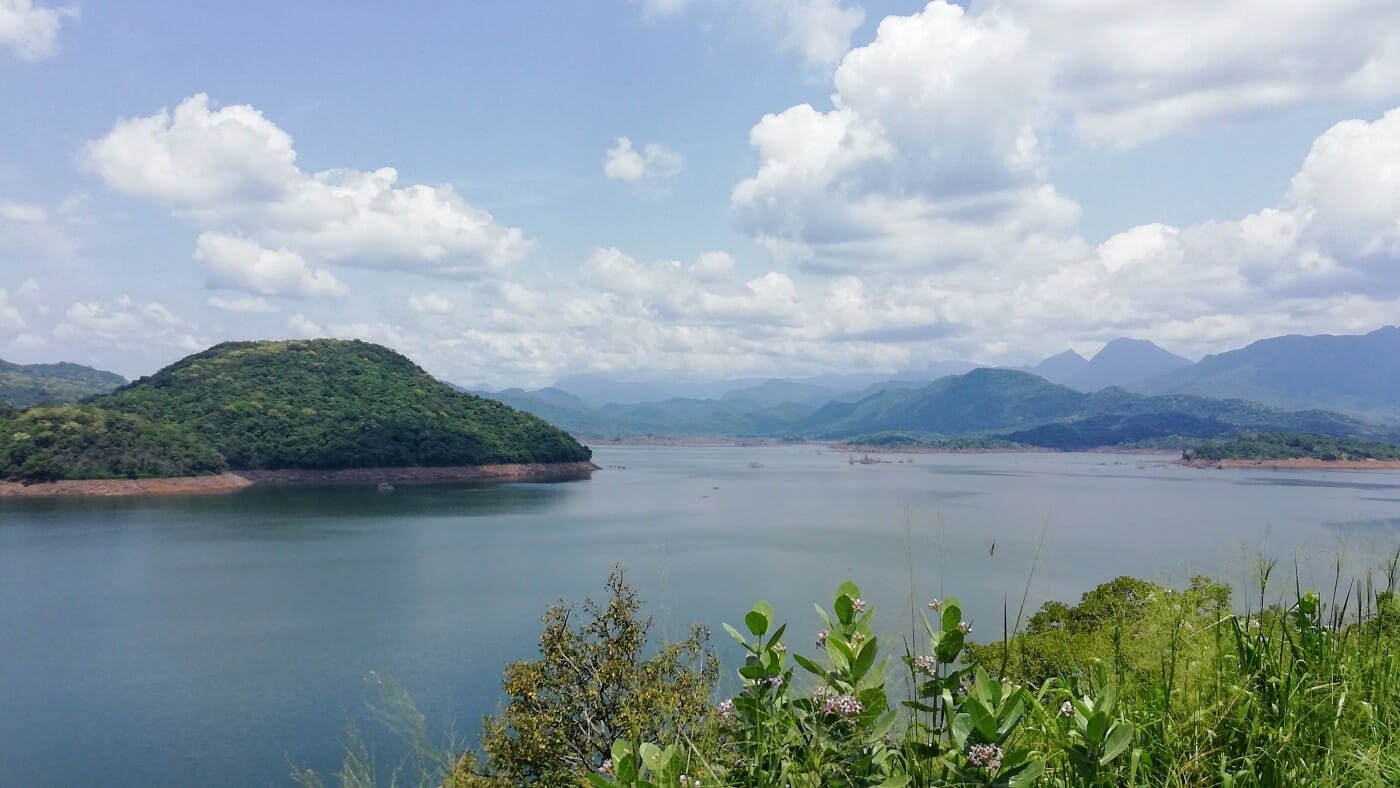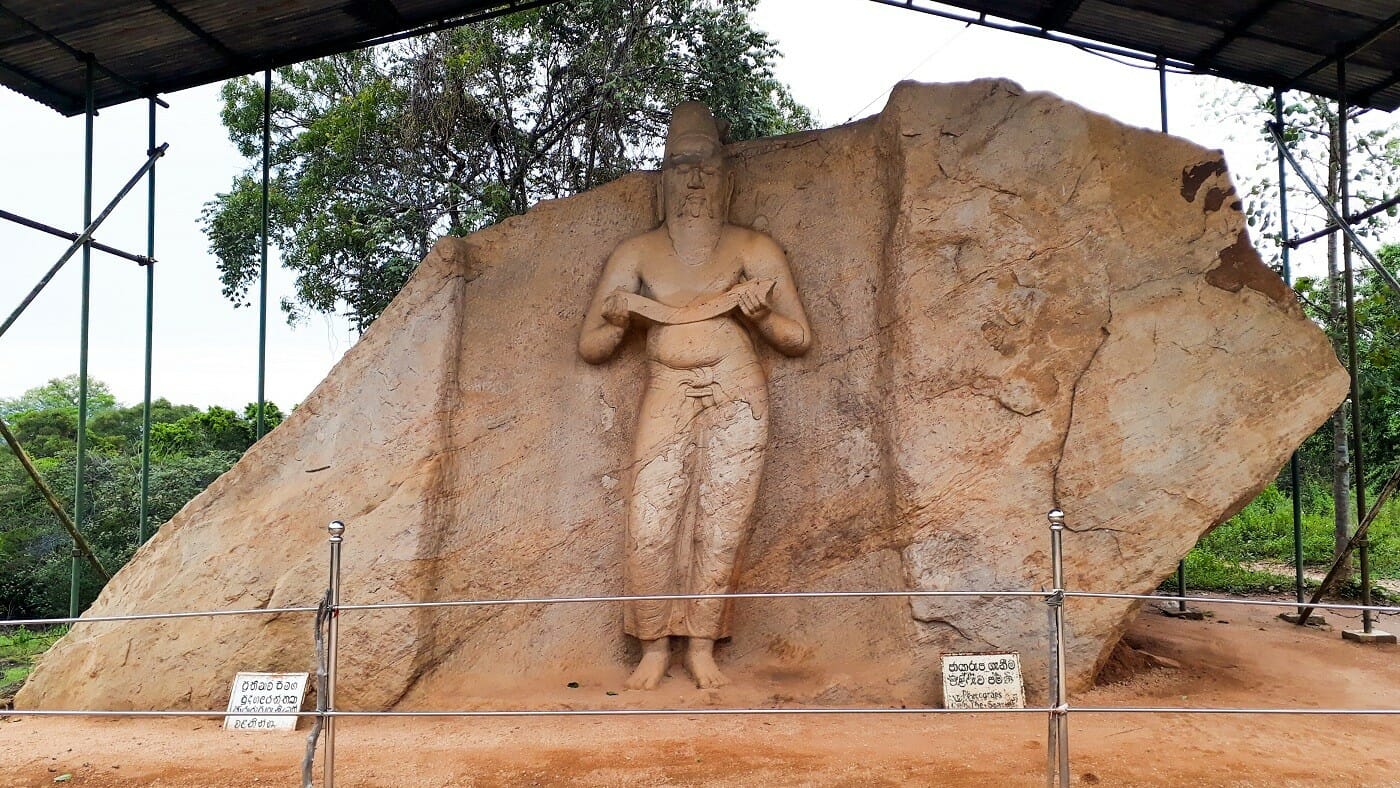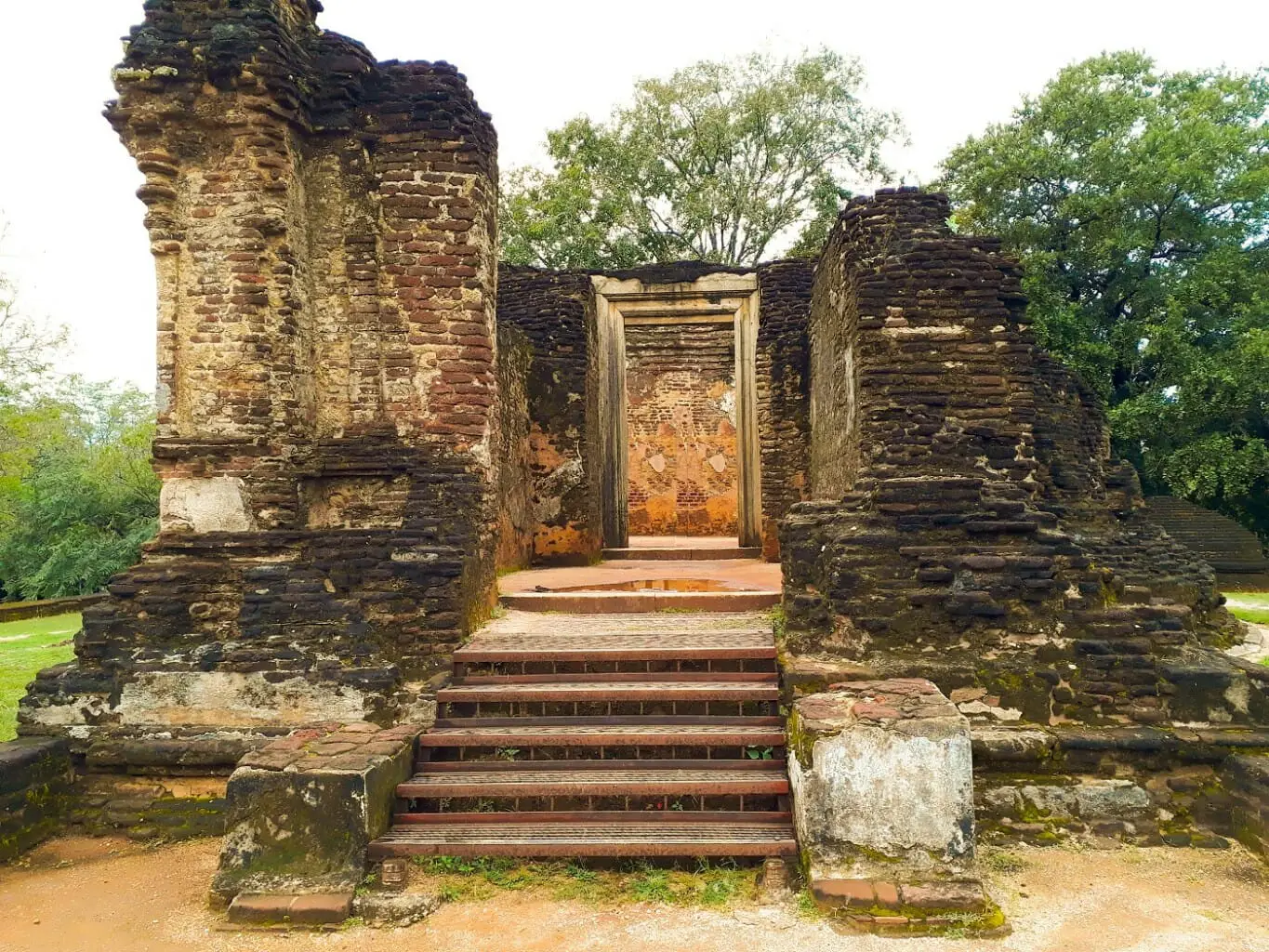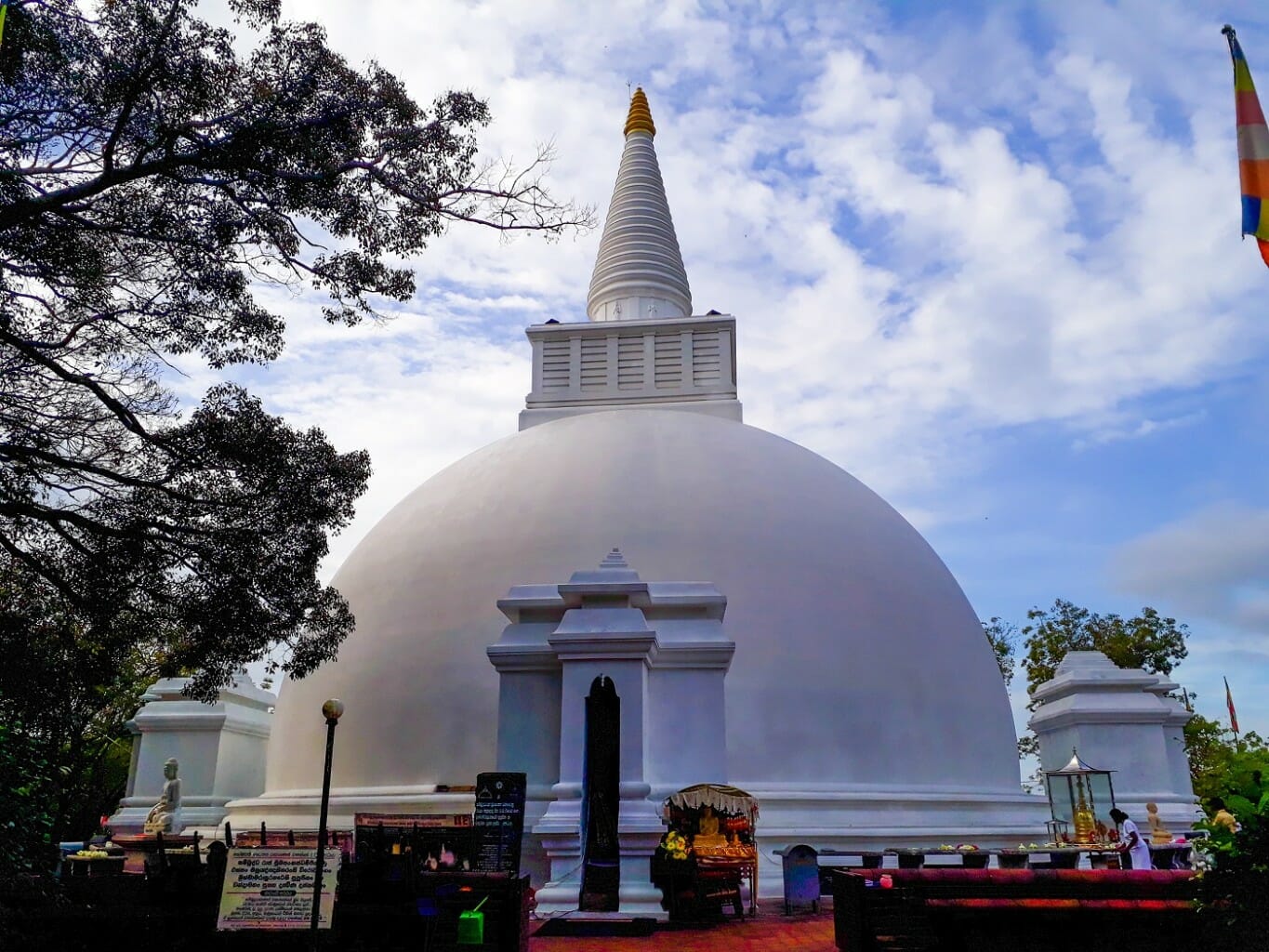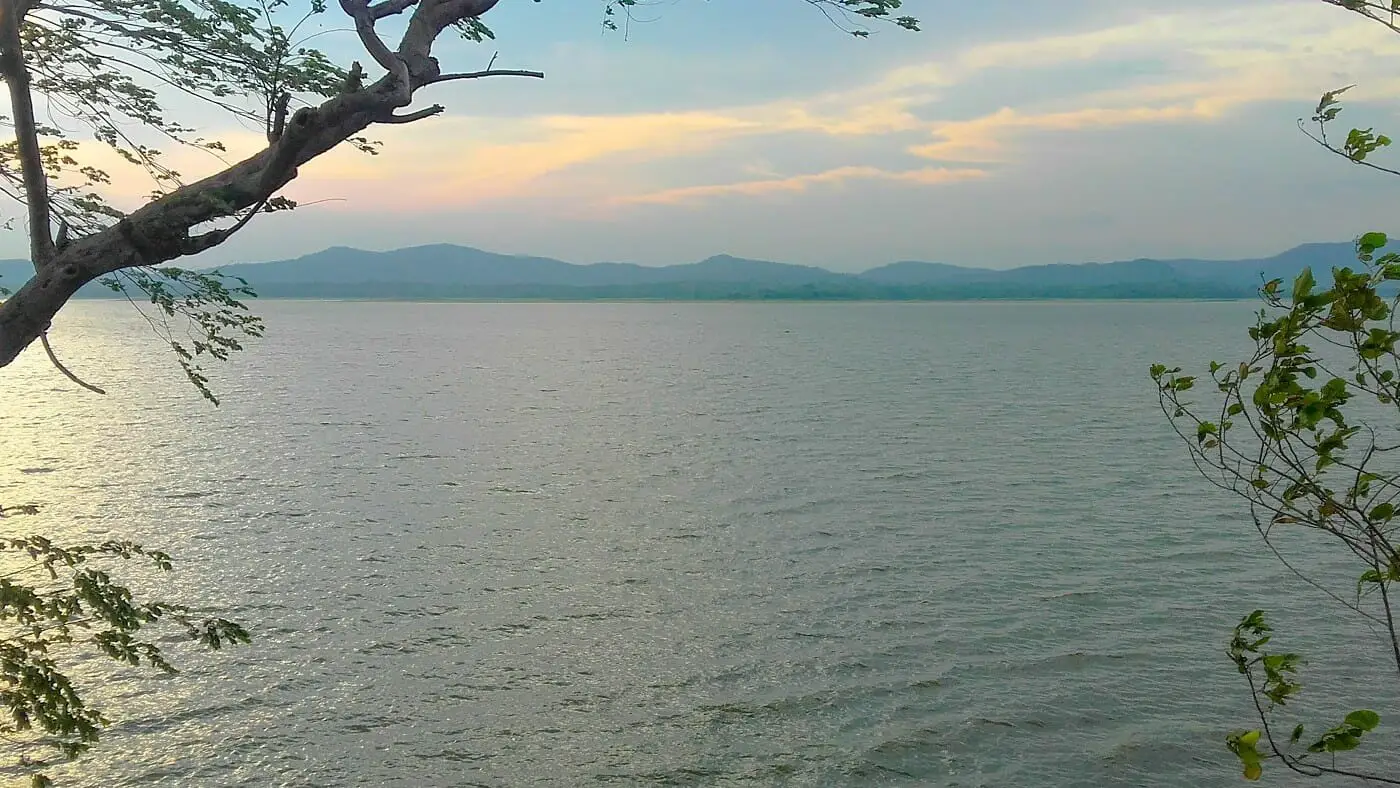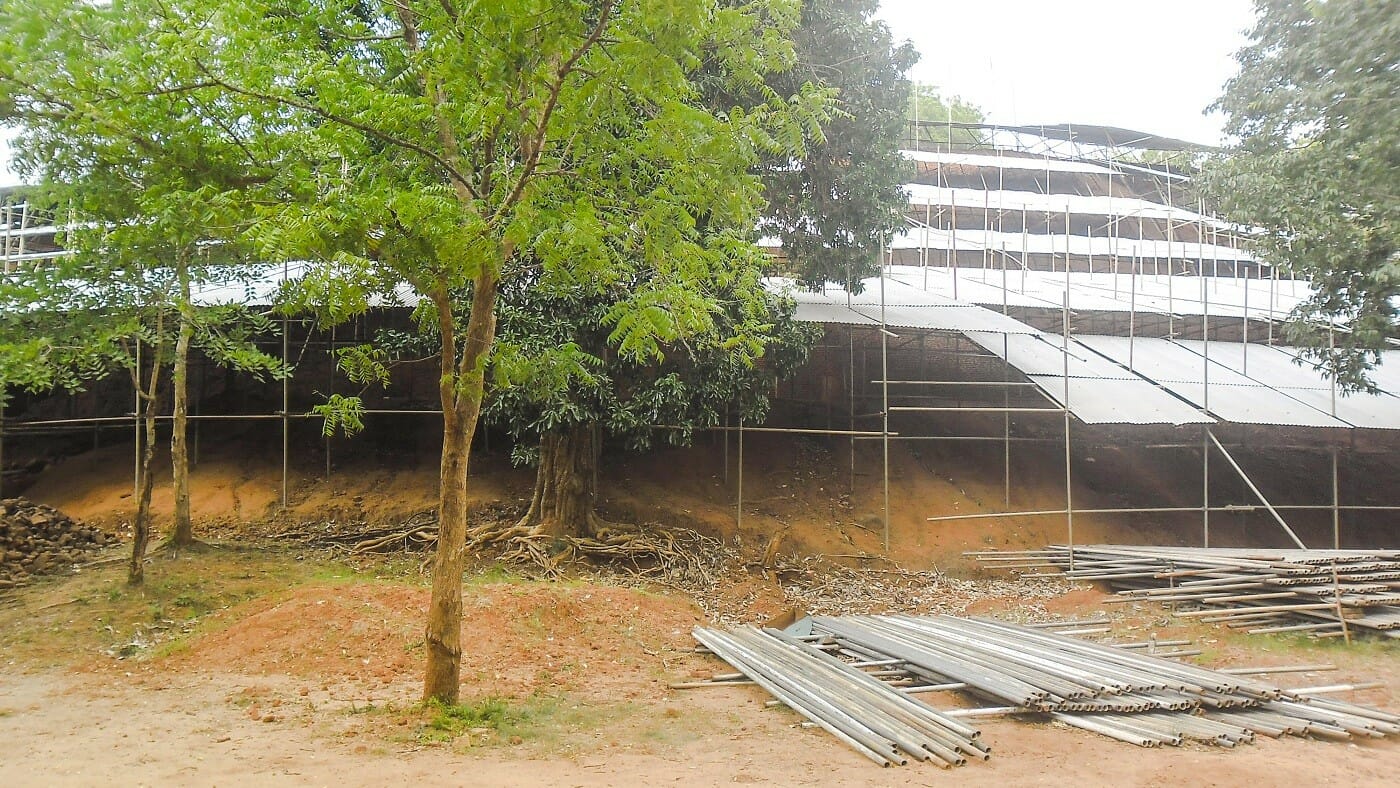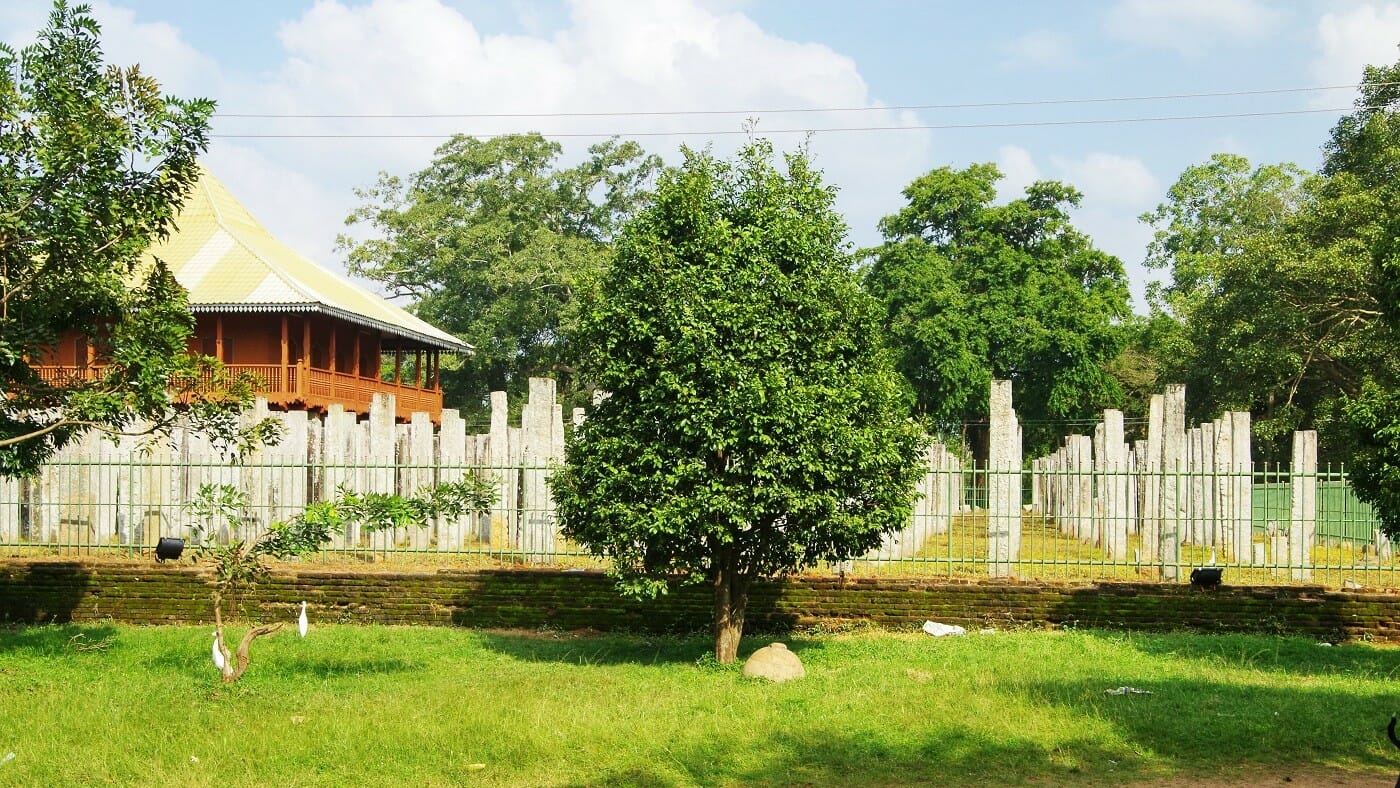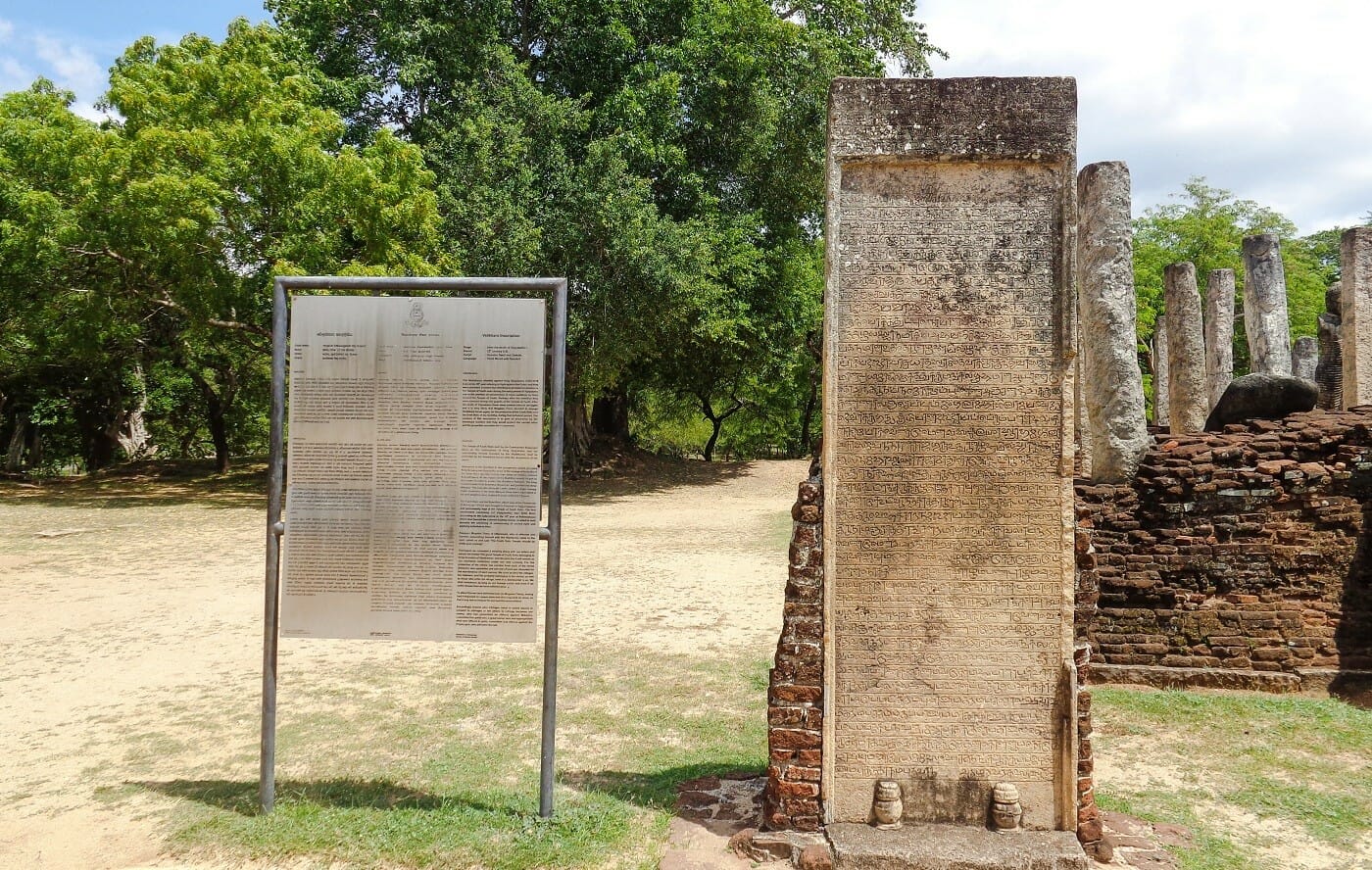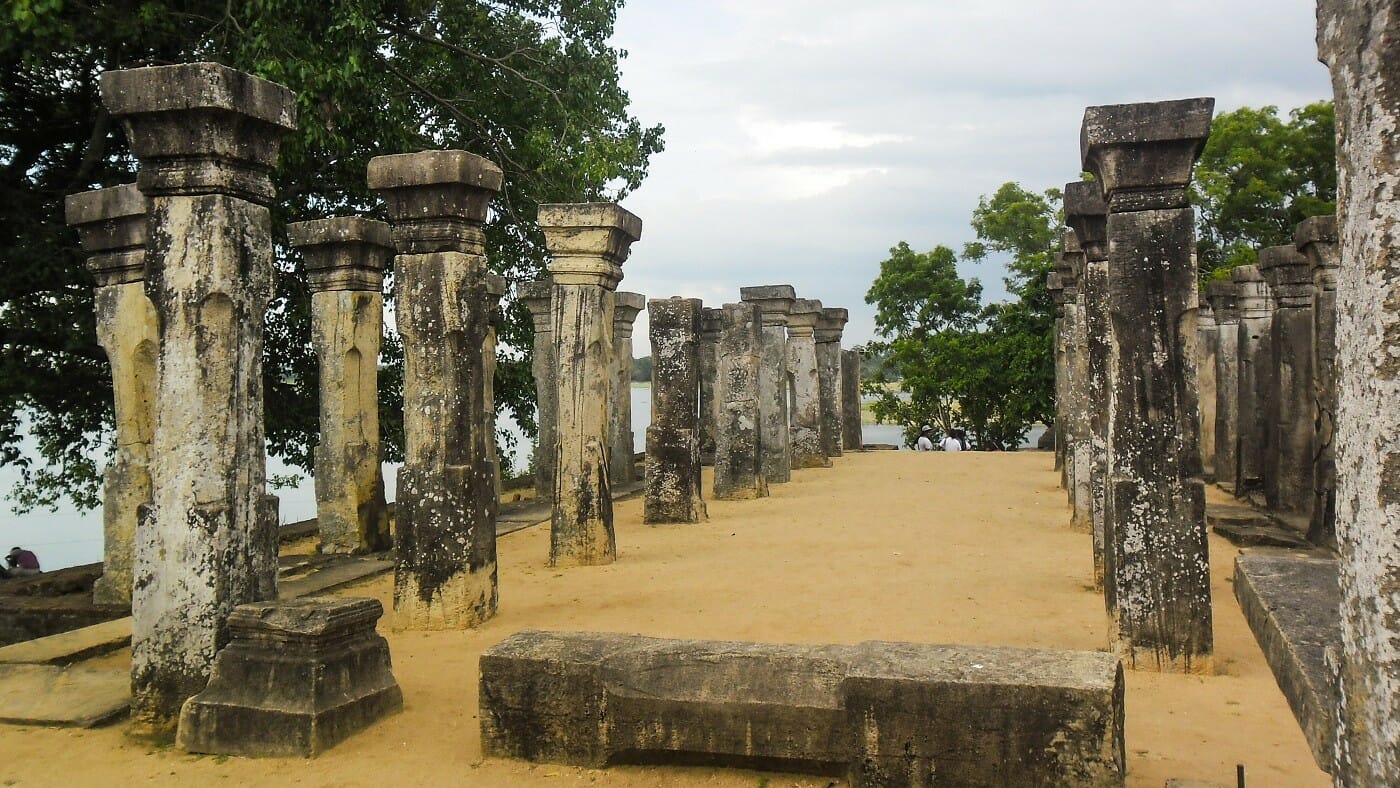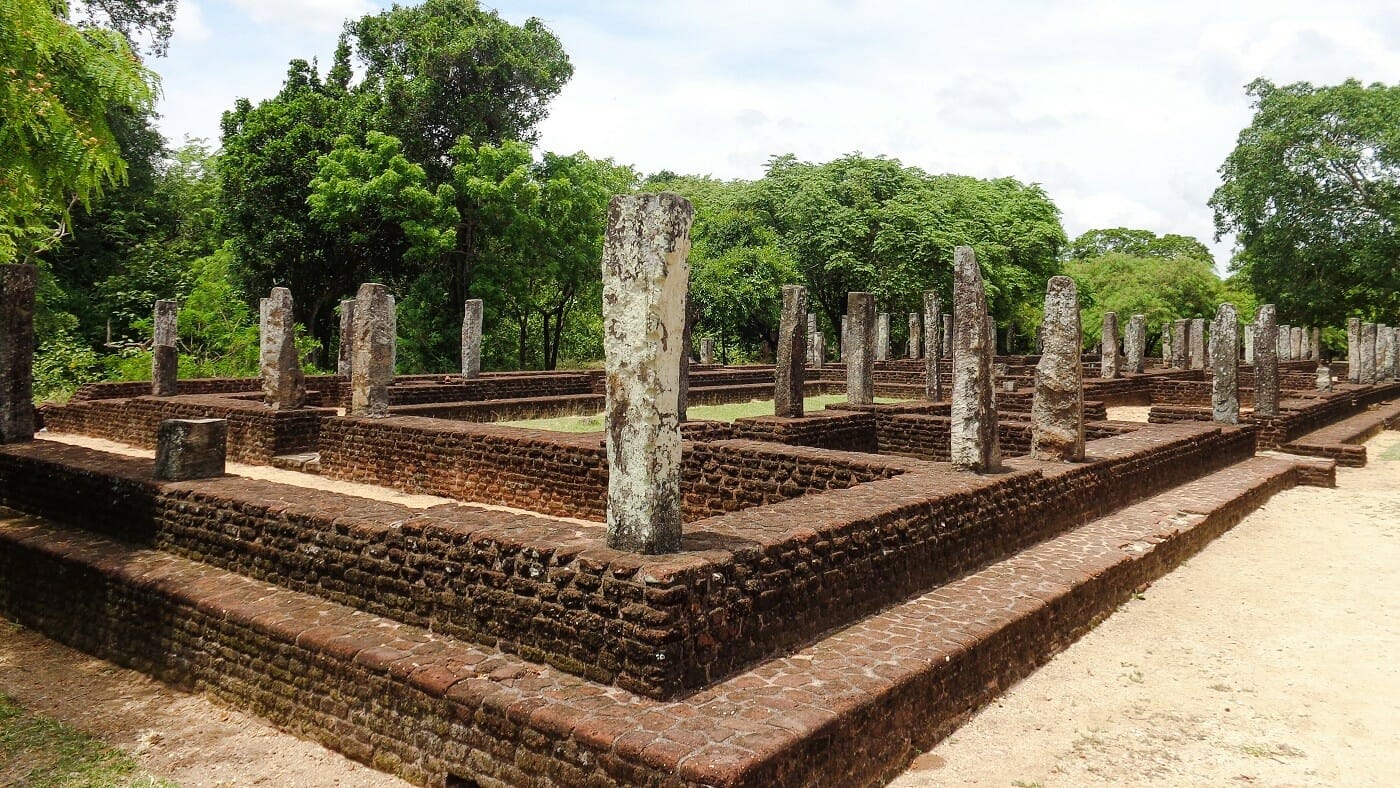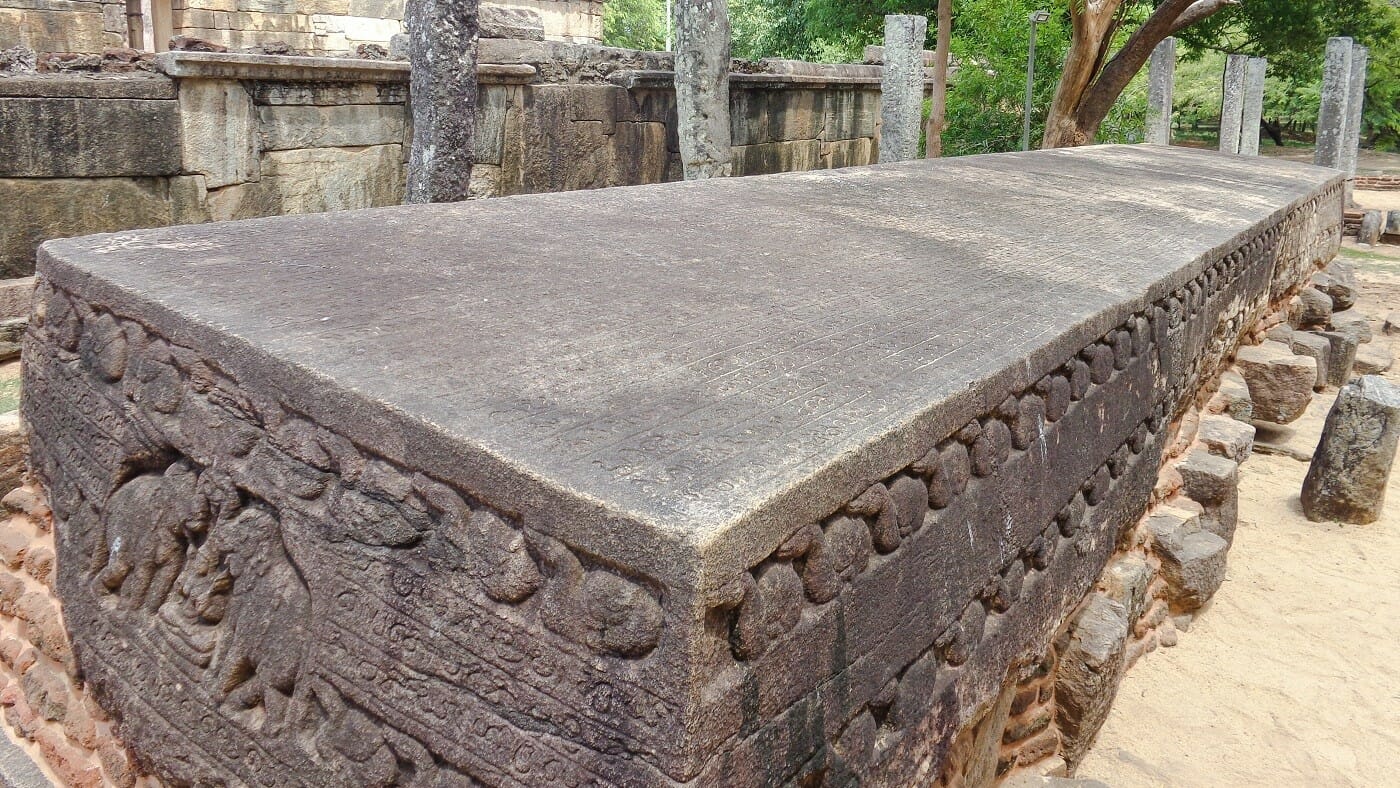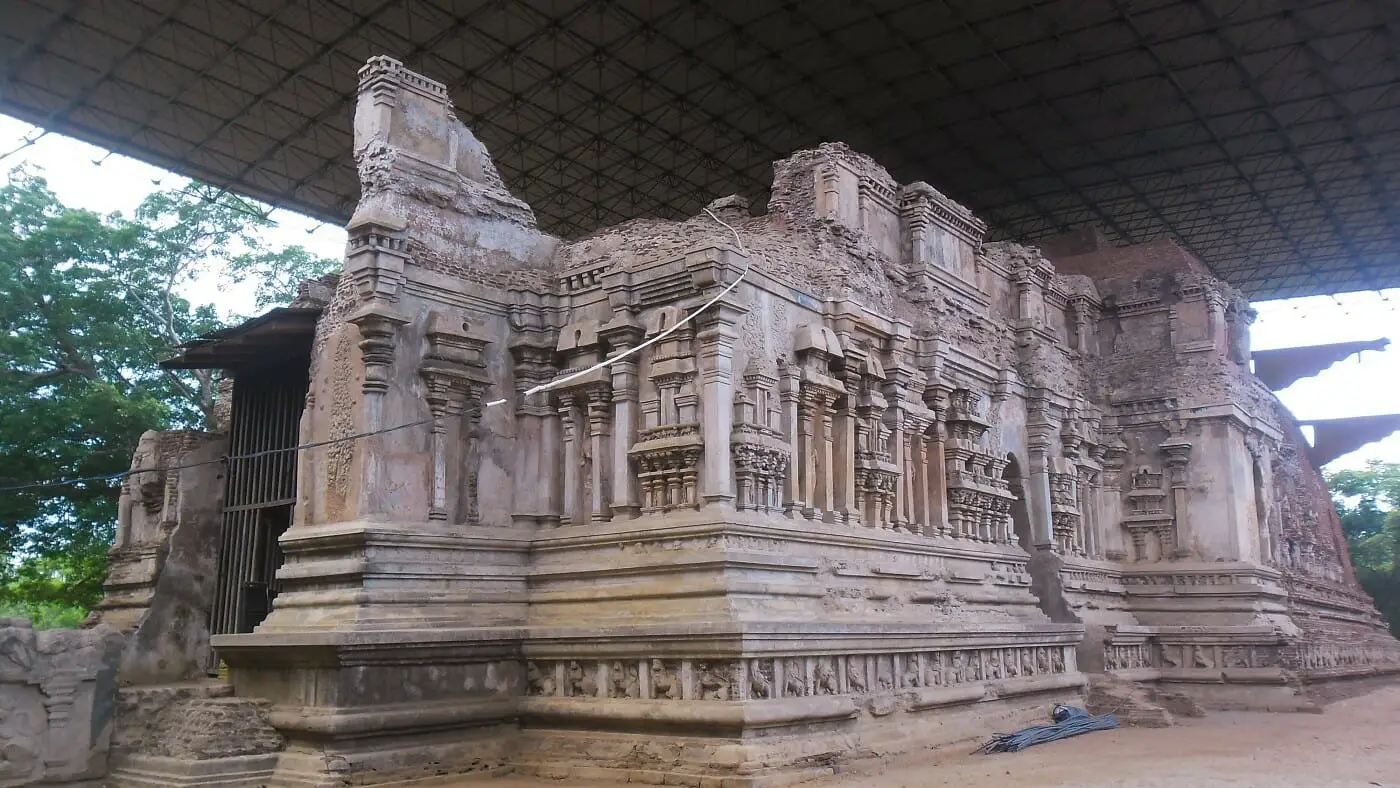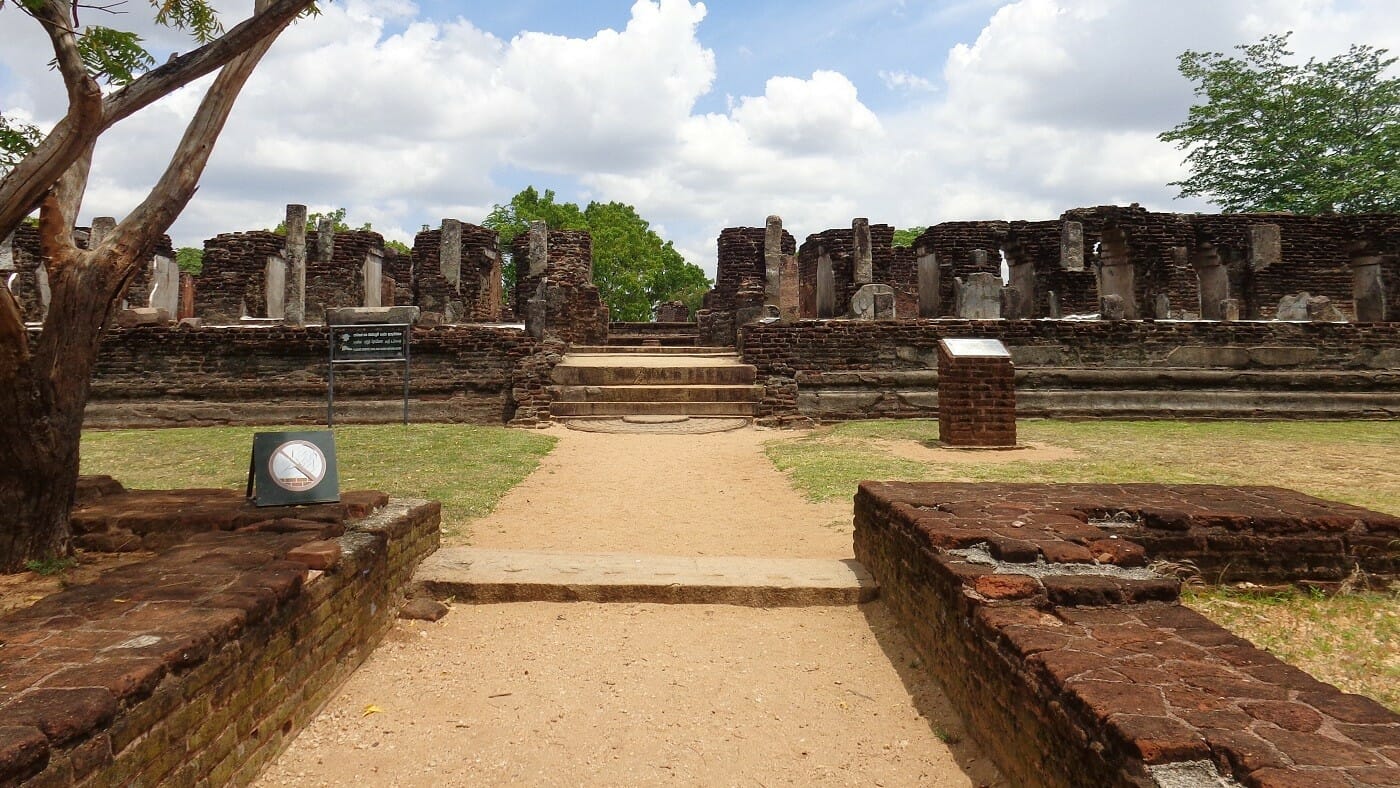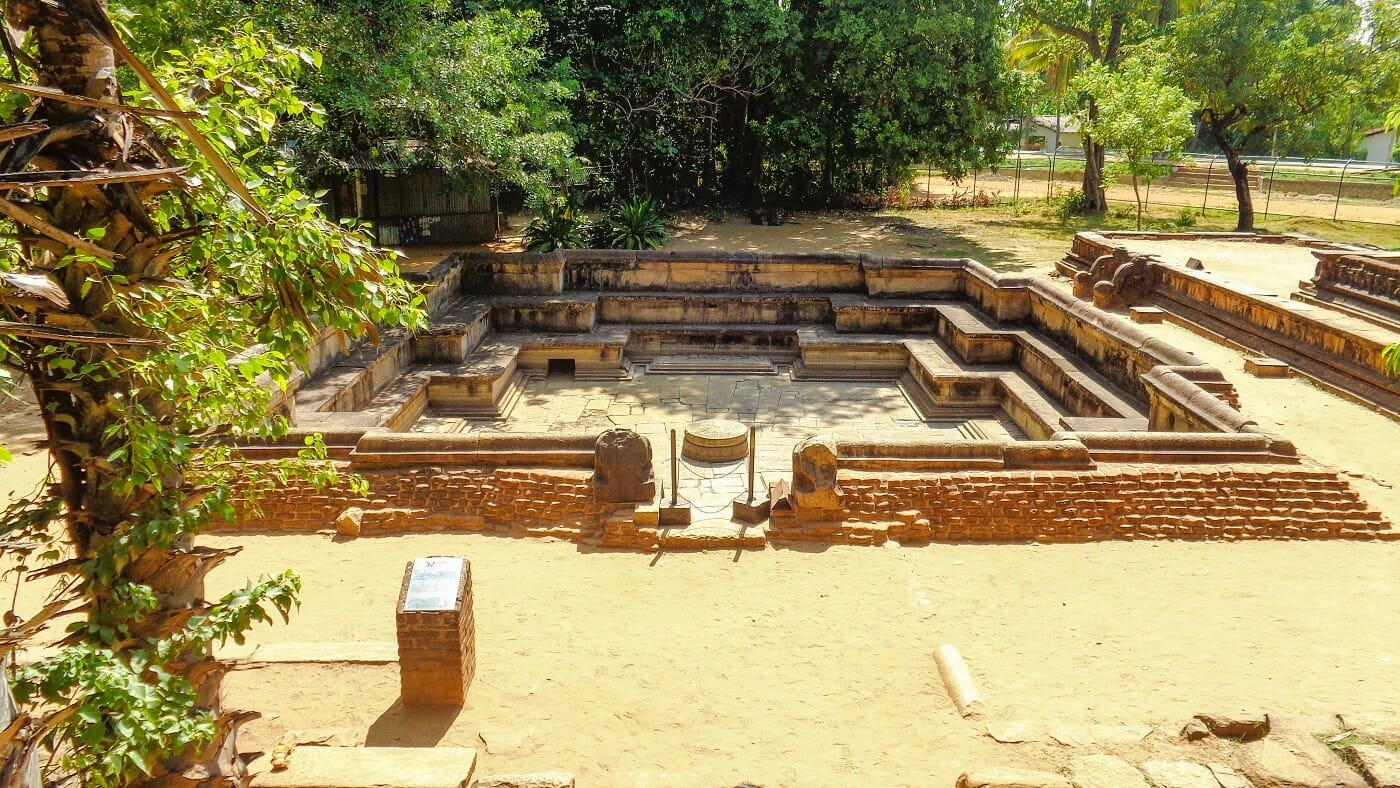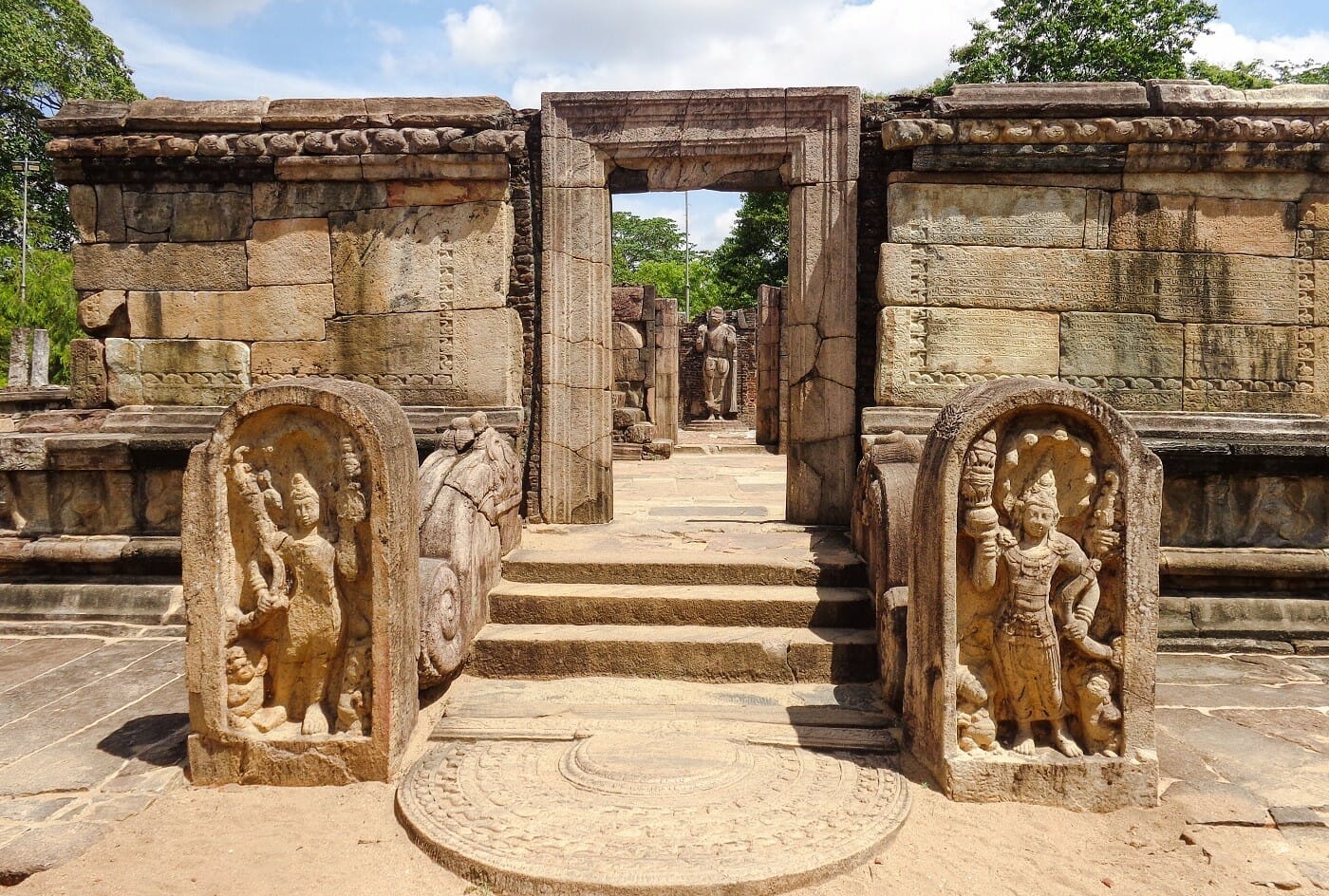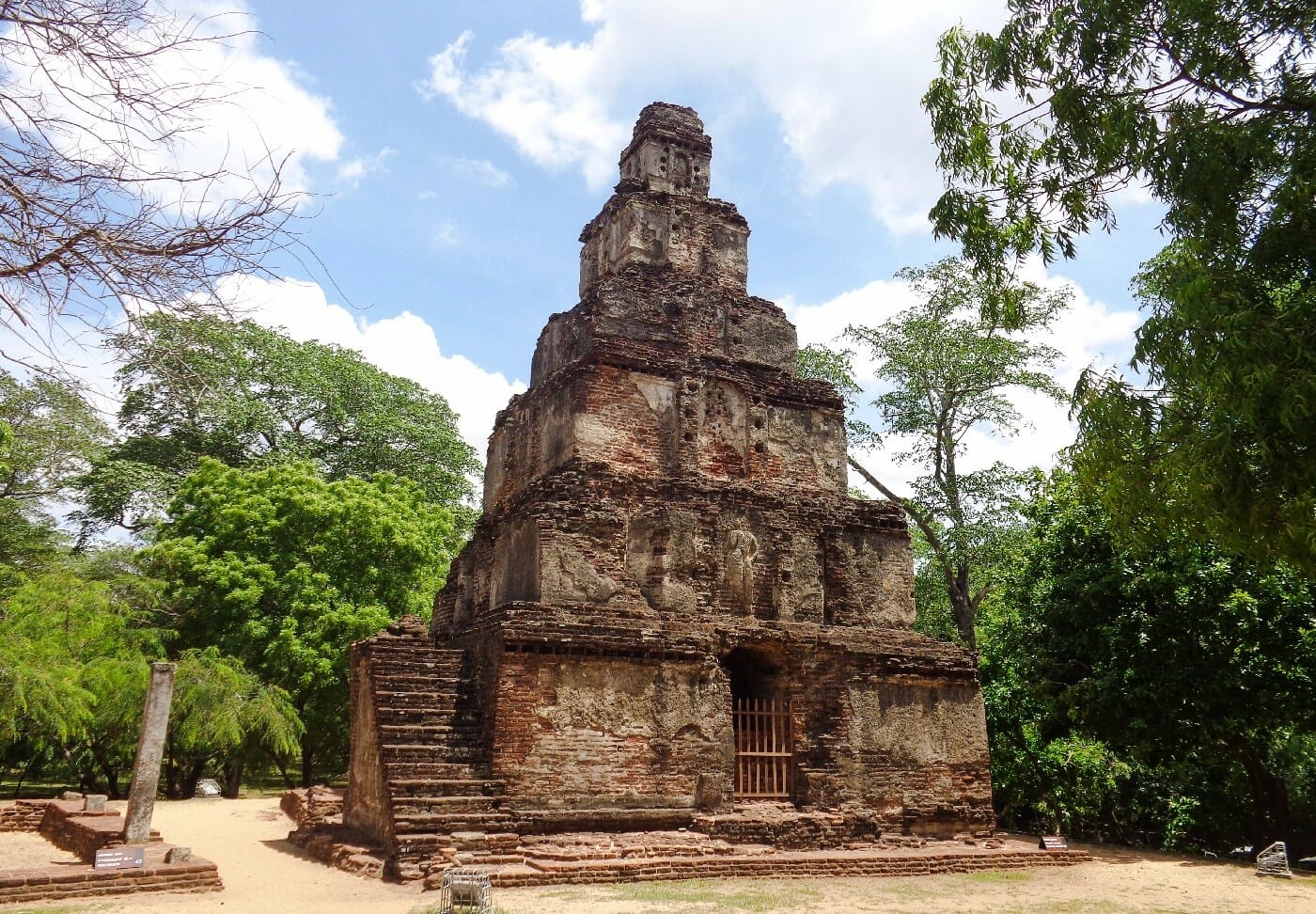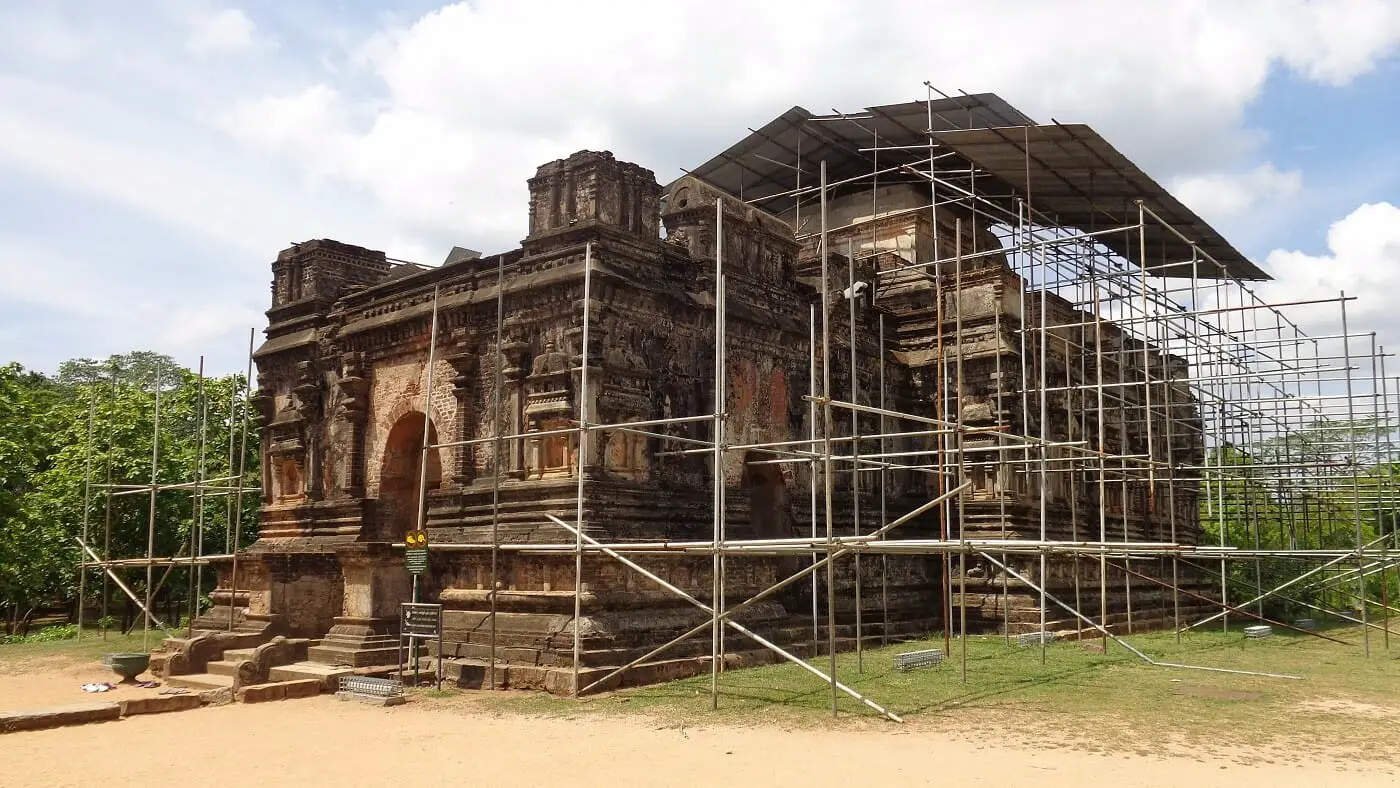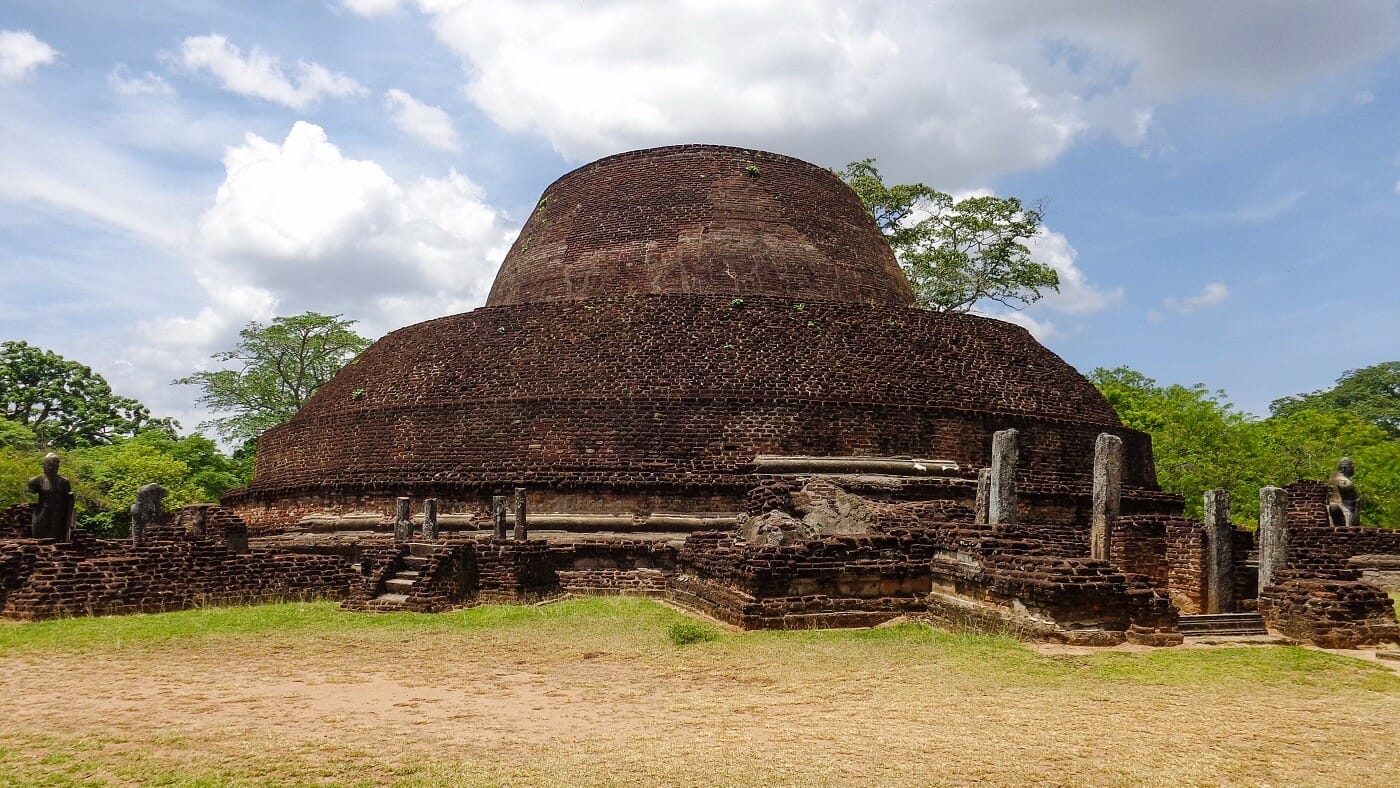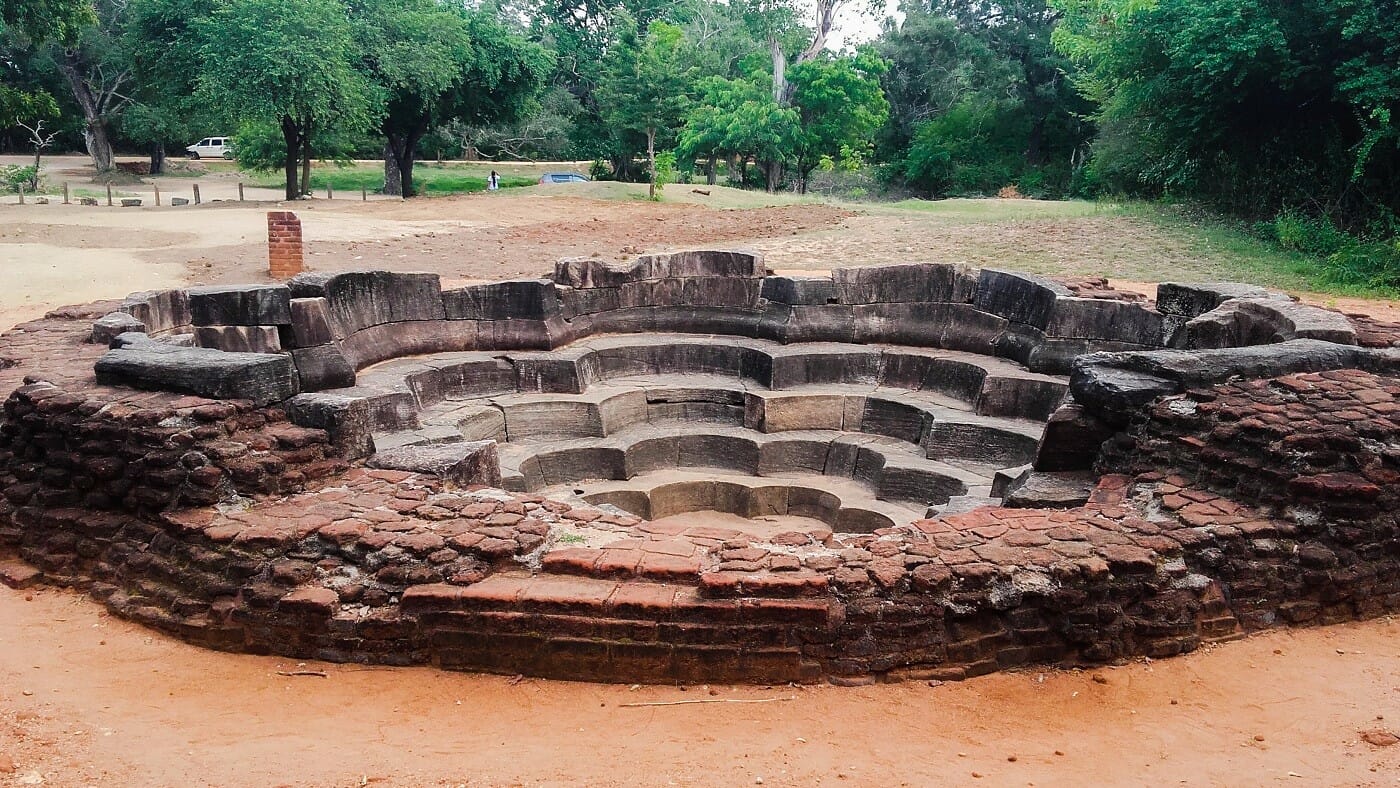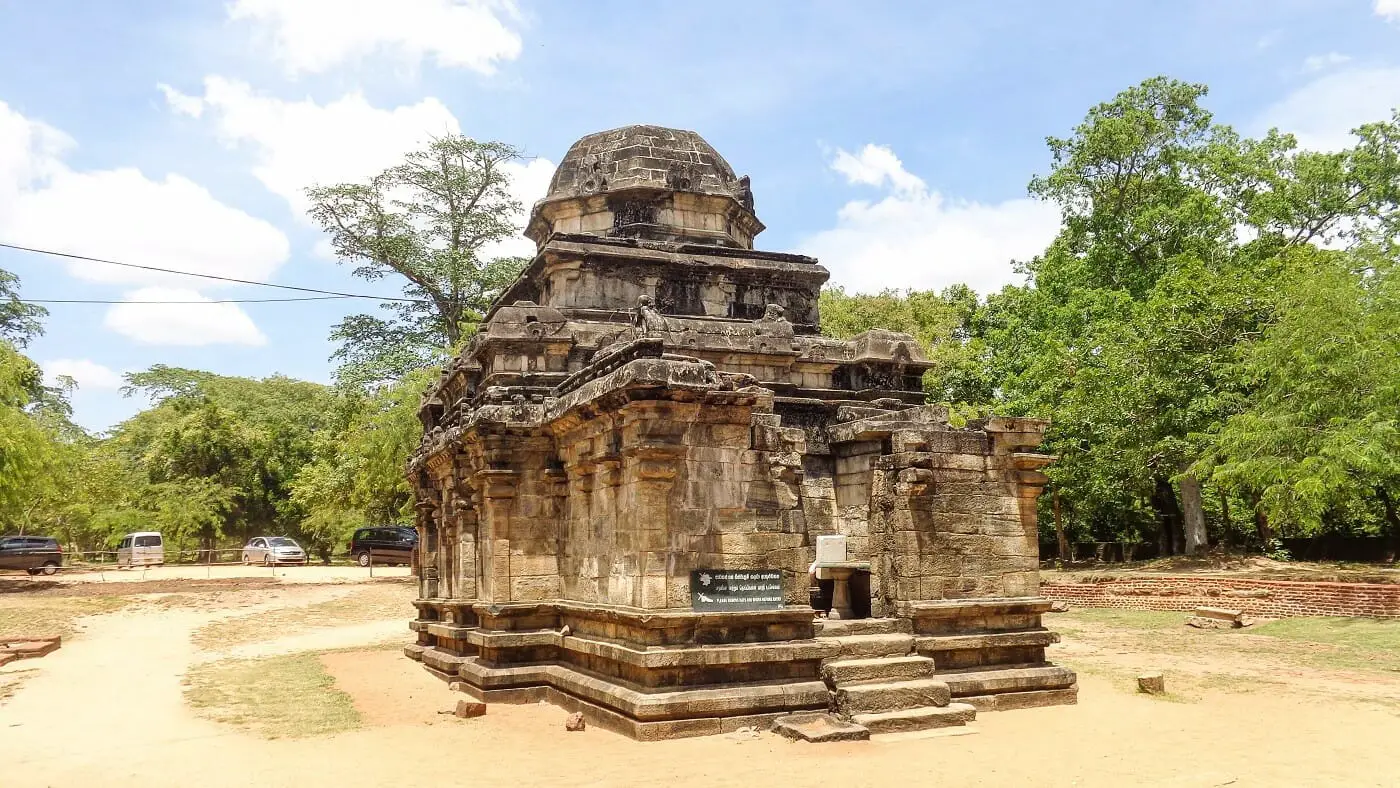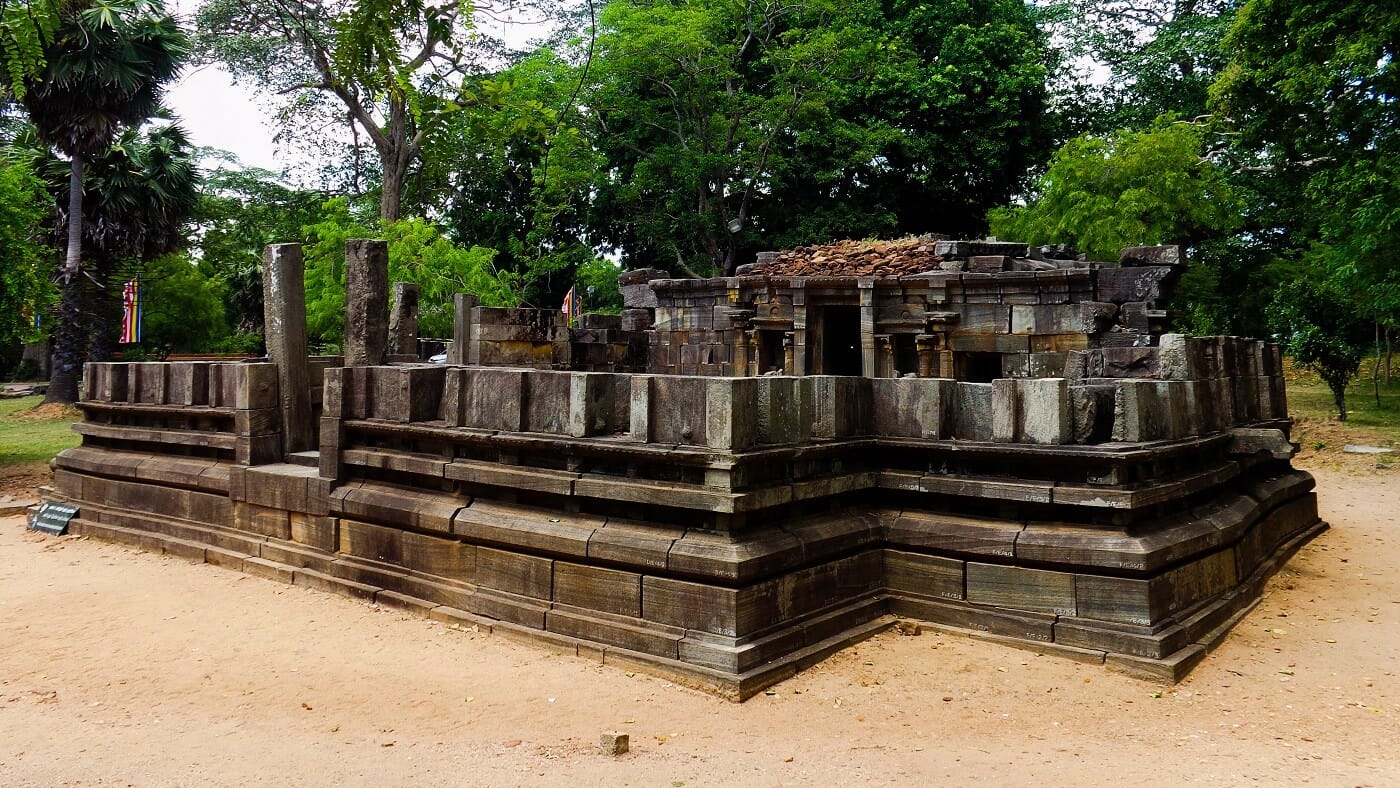Favorite
Kaudulla National Park was designated as a national park on April 1, 2002. It is located in the Polonnaruwa District of North Central Province Sri Lanka. The park is spread over 6,900 hectares. You can reach the park by Ambepussa – Kurunegala – Trincomalee highway and it is around 190km away from Colombo. The Minneriya National Park, another park where you will find the Elephants in large numbers are also located close to this park. However, Kaudulla is less crowded compared to Minneriya and therefore some tourists prefer to visit Kaudulla. Kaudulla is another great place to see elephants in their natural Read more...
Favorite
Avukana Buddha Statue is a great masterpiece of sculpture which explain the competence of artist in ancient Sri Lanka. It is an over 40 feet high Buddha statue carved out of a great granite rock face built during the reign of King Dhatusena (455 – 473 AD). It is located in the vicinity of Kala Wewa in Anuradhapura district of North Central Province, Sri Lanka. In this is statue the Lord Buddha is depicted in Asisa Mudra which is a pose of blessing. Originally this statue had been placed inside an Image house and now you can see only the crumbling brick walls of Read more...
Favorite
Vijithapura Rajamaha Viharaya is an ancient Buddhist temple worshiped by Buddhist all around the country. The temple is located closer to the Kala Wewa in Anuradhapura district of North Central Province, Sri Lanka. You can access this temple through Kekirawa – Galewela road and only about 10km away from the Kekirawa temple. According to the historical sources (like Mahavamsa, Deepavamsa, Tupavamsa, and Saddharmalankaraya), the history of the Vijithapura area goes back to the reign of King Vijaya (543–505 BCE). The beginning of the Vijithapura Rajamaha Viharaya is not clearly identified. However, according to the legends, the history of the temple Read more...
Favorite
The Moragahakanda Reservoir is the largest reservoir of the Mahaweli project. The Moragahakanda Dam is a high gravity dam with a height of 65 meters. The dam has created the Moragahakanda Reservoir, which has an active storage capacity of 521,000,000 cubic meters and is four times bigger than the gigantic Parakrama Samudraya in Polonnaruwa. The main viewpoint of and the dam can be easily accessed via Naula – Elahara – Pallegama – Hettipola (B312) road which is starting from Naula on Kandy – Jaffna (A009) road. The reservoir mainly belongs to the Polonnaruwa District of North Central Province. You can also access this Read more...
Favorite
This beautifully carved ancient statue is located near the Pothgul Vehera in the Polonnaruwa District of North Central Province, Sri Lanka. The identity of this statue is not yet confirmed and some believed it to be the statue of King Parakramabahu the Great (1123–1186). And others believed that it is the statue of great Saint called Pulasthi or Kapila. The statue is about 3.5m tall and carved into a large rock boulder. Enter your current location in the search box below the map to find the best route to the statue of King Parakramabahu the Great Click here to find a list Read more...
Favorite
Pothgul Vehera is located in the Polonnaruwa District of North Central Province, Sri Lanka. The Sinhalese name “Pothgull” has the meaning of “place to store books”. As such, with the other historical evidence, this ancient place has been identified as the oldest Buddhist library complex in the country. It was built by the King Parakramabahu the Great (1153-1186). Click here to find a list of accommodations around Polonnaruwa, Sri Lanka on Booking.com Read more...
Favorite
The Somawathiya Stupa is said to be enshrined the right tooth relic of Lord Buddha. It is located in Somawathiya Rajamaha Vihara premises in Polonnaruwa District of North Central Province. The area in which the temple located belongs to the Somawathiya National Park as well. The stupa was built during the reign of the King Kavanthissa (205–161 BC ) and it was named after his sister called princes Somawathi. Enter your current location in the search box below the map to find the best route to the Somawathiya Stupa. Click here to find a list of accommodations around Polonnaruwa, Sri Lanka. External Read more...
Favorite
The Minneriya Tank was built by the king Mahasen (276-304), who ruled the country from Anuradhapura. The tank is located in the Polonnaruwa District of North Central Province, Sri Lanka. The tank has been built by constructing a dam across Minneriya River. The dam is about 2 km in length with the maximum height of 21.34m[1]. The tank covered an area of 4,670 acres and it receives Mahaweli water through Elahera Giant Canal. Because of this giant construction and its usefulness to the irrigation and agriculture, the countrymen regarded the king as a god and he was named as Minneri Read more...
Favorite
Demalamaha Seya is an ancient stupa built by the King Parakramabahu (1153-1186). It is located in the main archaeological site in the Polonnaruwa District of North Central Province, Sri Lanka. As it was described in the ancient chronicle Mahawansa, the stupa named “Demalamaha Seya” was with a height of approximately 1300 cubit (594.36 m). Presently this brick built stupa has a perimeter of 600 m and height of 25.65 m. The excavation and the conservation project of the Demalamaha Seya was commenced by the Central Cultural Fund in 2014. n.b. These photos were taken in October 2017 External Links Bringing back Read more...
Favorite
The Lovamahapaya is one of the Eight Sacred places known as “Atamasthana” and it is located in the Sacred City of Anuradhapura in North Central Province, Sri Lanka. When you walk towards Ruwanweliseya from Sri Maha Bodhiya, The Lovamahapaya can be seen on your right-hand side. According to the Mahawamsa, the Lowamahapaya was a nine-story building and It was built by the King Dutugemunu (161-137 BC). You can read more about this place by visiting the external links given below. Photo Credit: Balou46, ChampikaG External Links: King Dutugemunu’s gracious gift to Maha Sangha The Entrance Into the Tusita-Heaven Read more...
Favorite
Velaikkara Inscription is an ancient inscription carved on a stone located in the Dalada Maluwa premises of main archaeological site in Polonnaruwa District of North Central Province, Sri Lanka. The Velaikkaras rebelled against King Vijayabahu (1055 – 1110 A.D.) in his 30th year refusing to fight against the Colas and they were punished. It seems that Velaikkaras provided protection to the Temple of Tooth even during the early period of Viajayabahu due to the mention of construction of some building by them around the Temple of Tooth. Perhaps after the rebellion, they were removed beings the guards of the Temple of Read more...
Favorite
This building has been identified as the Council Chamber of King Nissankamalla (1187 – 1196 A.D.). An inscription on the lion figure made of the stone itself identifies as the throne of the king. And the inscriptions on the pillars indicate the seating arrangement of the respective ministers and state officials. This Council Chamber is located in the Dipauyana premises in Polonnaruwa District of North Central Province, Sri Lanka. You can access it through the Archaeological Museum or by the footpath (Royal Palace Pathway) which is starting in front of the entrance to the main archaeological site. Read more...
Favorite
This monastic hospital is located in the Alahana Piriwena premises of the main archaeological site in Polonnaruwa District of North Central Province, Sri Lanka. The archaeological excavations have confirmed this building as a monastic hospital constructed in the 12th century. A medicine trough (Behet Oruva)made of stone is still can be seen in one room. This medicine trough had been used for treating patients by immersing in herbal oil. Several surgical and medical instruments also have been discovered during the excavations at this site. There are two main sections in this building namely living and treatment sections. Both sections have open courts Read more...
Favorite
Gal Potha (Stone Book) is a giant stone inscription located in the Dalada Maluwa premises of main archaeological site in Polonnaruwa District, Sri Lanka. It is a work of King Nissankamalla (1187-1196) and it is the largest stone inscription discovered so far. The inscription itself tells that this large stone was transported from Minintale, some hundred kilometers away from Polonnaruwa. It describes the genealogy, heroic and altruistic deed of King Nissankamalla. The letters of the inscription were embossed with molten iron. The figure of the woman on the side face of the stone on whom two elephants are sprinkling water has been identified as Goddess Gajalakshmi (Goddess Read more...
Favorite
Tivanka Image House is identified as the image house of Jetavanaramaya Monastery built by the King Parakramabahu the Great (1153 – 1186). It is located in the main archaeological site of Polonnaruwa District in North Central Province, Sri Lanka. The name Tivanka (means three bends) is given due to its giant Buddha image is bent at three places, namely shoulder, hip, and knee. The image house is famous due to the paintings on its interior walls. The paintings belong to the 12th century and they depict certain incidents from Jataka Stories and the life of Buddha. Like Thuparamaya and Lankathilaka, this image Read more...
Favorite
Baddhasima Prasadaya is the Pohoyageya or Uposathagharaya (Chapter House) of the monks of Alahana Piriwena where they rehearsed the codes of discipline (Especially the pati mokka). It is located in Polonnaruwa District of North Central Province, Sri Lanka. The remaining pillars and brick walls suggest that there had been a multi-storied building and according to the Mahavamsa, there had been a twelve storied building. As such, this may be the largest of the Uposathaghara in the Island. The central Platform of the building was to locate the relic casket while four monks seated on the stone pedestal facing the cardinal directions read the code of Read more...
Favorite
This pond or royal bath is presently known as “Kumara Pokuna” is believed to be the Pond named “Sila Pokkharani” mentioned Mahavamsa. The pond is located next to the Council Chamber of King Parakramabahu in Polonnaruwa District of North Central Province, Sri Lanka. According to Mahavamsa, the pond was built by King Parakramabahu the Great (1153 – 1186 A.D.). The pond is located such a way that it can get water from the Parakrama Samudraya tank and it has provided with outlets to drain off the used water. The water was supplied to the pond by the two dragon mouths located Read more...
Favorite
Hatadage is an ancient shrine in the Polonnaruwa District of North Central Province, Sri Lanka. It was built by the King Nissanka Malla (1187-1196 A.D.). This had been used to place the sacred tooth relic of Lord Buddha. According to historical sources, the shrine has built in sixty hours. The English translation of the Sinhalese word “Hata” is sixty, represent the duration of the construction period and the word “Dage” has the meaning of “relic shrine”. The remaining features of the building for today, evidence that the shrine was originally a two-story building. The shrine is 120 ft in length Read more...
Favorite
Sathmahal Prasadaya is a unique type of 7 storied ancient building in Dalada Maluwa premises in Polonnaruwa District of North Central Province, Sri Lanka. The Sinhala name “Sathmahal” has the meaning of 7 storied. The building is completely built with bricks and it takes the shape of a pyramid. The base of the building is the shape of a square with side length of 35 ft. There are four doors with arches on each side. Since these type of buildings have been found in Northern Thailand, this is also considered as a monument which confirms the foreign affairs in ancient Sri Lanka. Read more...
Favorite
This image house is located in the Dalada Maluwa premises in Polonnaruwa District of North Central Province, Sri Lanka. Although it is known as Thuparama Image House, the ancient name or the builder is not known. The image house is categorized as Gedige type as its walls and the roof is completely built with bricks. This is the only monument among those in Polonnaruwa where the roof is well preserved. A large seat thought to be the base of a giant seated Buddha statue can be seen inside the image house. The ornamentation of the exterior walls shows the influence of the Read more...
Favorite
According to chronicles, the Pabalu Vehera had built by Rupavati, the Queen of Parakramabahu the Great (1153 – 1186 A.C.). It is located in the Ancient City of Polonnaruwa in North Central Province, Sri Lanka. The present name Pabalu (meaning, beads), has given to the stupa because of a large number of beads found in the vicinity of this monastic complex. Around the stupa, there are a number of image houses with statues with different postures. A reclining Buddha statue has been kept in the largest image house. Read more...
Favorite
Nelum Pokuna (Lotus Pond) is an ancient pond with a unique design made by ancient Sri Lankan architects. It is located in the ancient city of Polonnaruwa in North Central Province, Sri Lanka. The pond got its name because of its design which looks like a bloomed lotus flower. This pond is somewhat small compared to the other ponds found in the ancient city of Polonnaruwa and it is built with stones. The structural design of the Nelum Pokuna Theatre also has been inspired by this Lotus Pond. This pond is unnoticed by many of the visitors since it is located somewhat away Read more...
Favorite
This Siva Devalaya is the oldest Hindu shrine found in the Ancient City of Polonnaruwa, Sri Lanka. It was built by king Raja Raja I (985 – 1014 A.D.). According to an inscription found, this place has been dedicated to the consort of the King. Read more...
Favorite
This Hindu Shrine is located in the archaeological site of Polonnaruwa, in North Central Province, Sri Lanka. The ancient name or the builder of this shrine is not known. However, according to the style of architecture, this may belong to the 13th century A.D. Read more...
